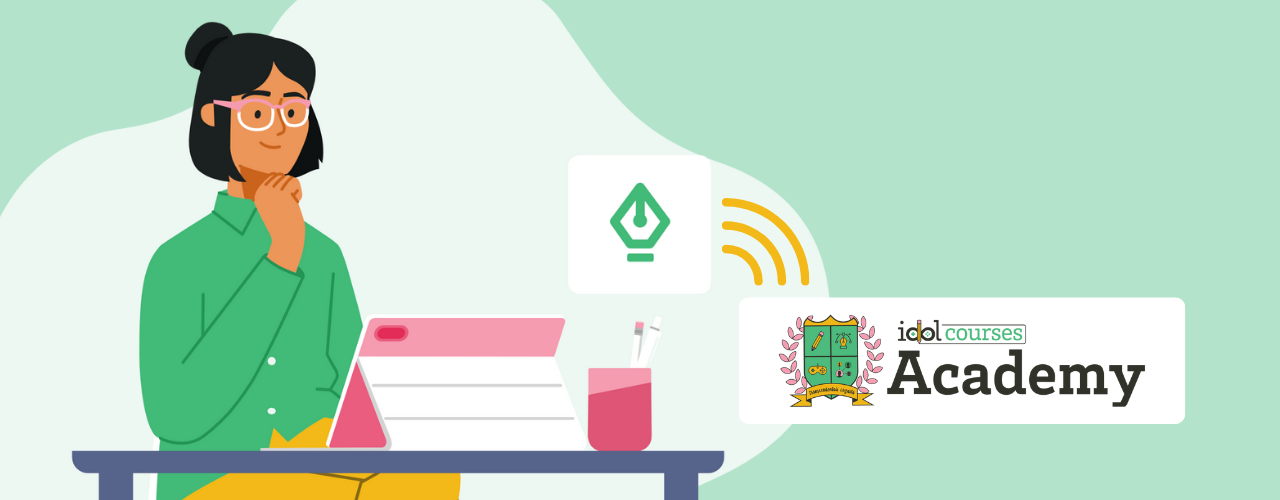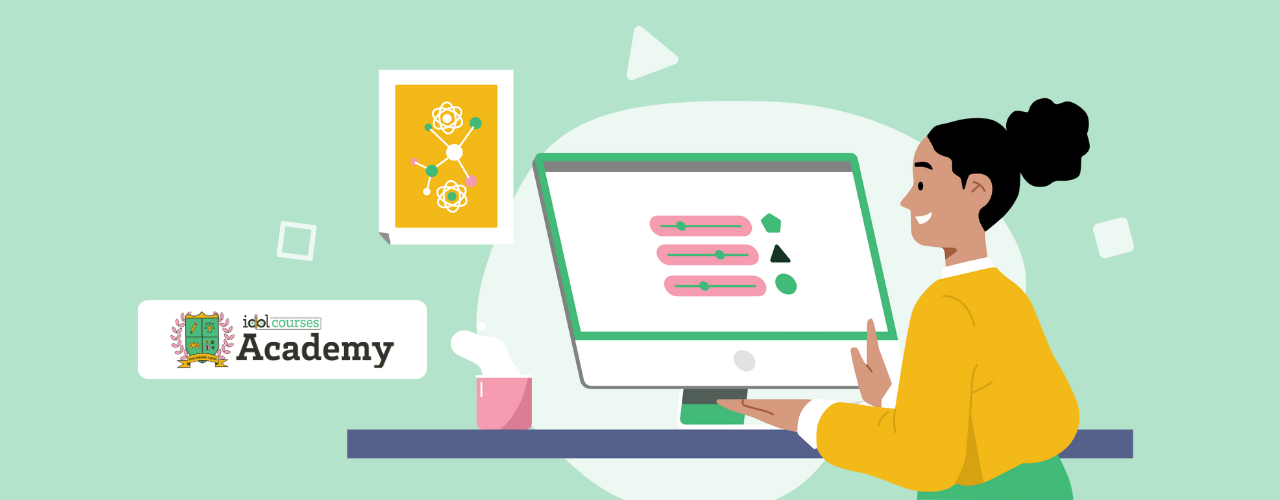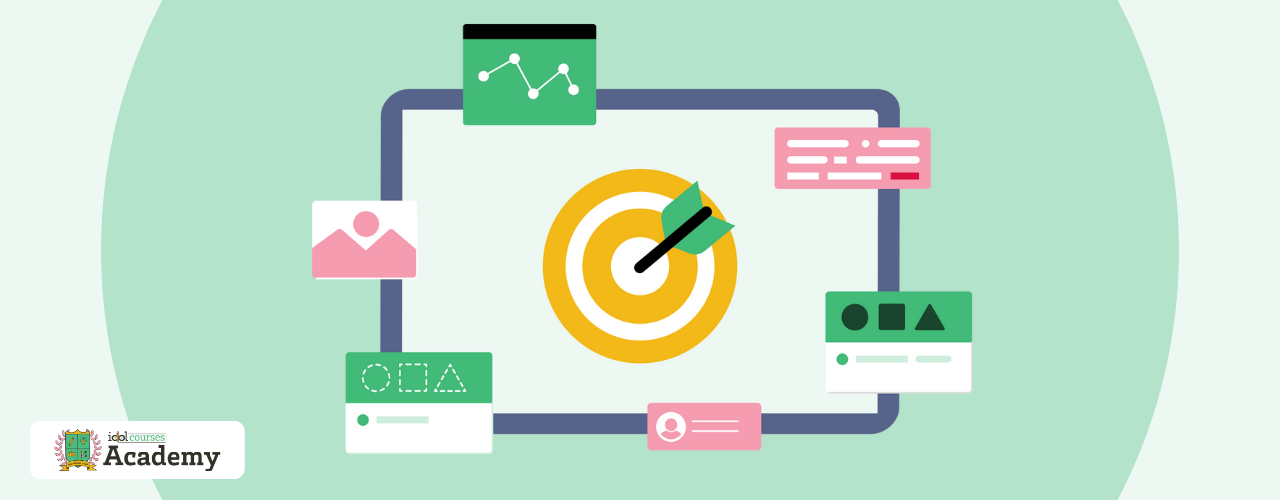Make Your Instructional Design Portfolio Stand Out to Potential Employers
Nov 03, 2023
Teachers Transitioning to Instructional Design
K-12 teacher looking to make a transition from education to the exciting field of instructional design should start the journey with IDOL Academy to learn vital skills such as mastering e-learning authoring tools and how to incorporate various instructional design models into learning solutions. After enhancing and augmenting your talents, the next step is putting together your instructional design portfolio. IDOL Courses also offers portfolio examples from which you can model your own. But what should you include?

Stand Out From the Crowd
How can those transitioning from teaching to instructional design jobs ensure that their portfolio's learning solutions stand out from the crowd? We will delve into strategies that will help you craft an exceptional instructional design portfolio. These strategies will not only highlight your skills but also showcase your unique approach to designing effective instructor led training and virtual curriculum aligned lesson presentations.
By implementing these strategies, you can produce a standout portfolio of adult education materials that sets you apart and positions you as a top instructional designer candidate in the competitive training industry.

Next Steps
Whether you host your portfolio on Google Sites, Canva, or use a paid hosting platform like Wix, highlighting essential skills as an instructional designer will take your education career to the next level as you captivate employers and open doors to exciting opportunities for instructional design jobs.

Highlight Your Process as an Instructional Designer
One of the most effective ways to set yourself apart as an instructional designer is to showcase your design process. Take the time to thoroughly document your approach, encompassing every step from outlining learning objectives, subject matter expert collaboration, to the development of storyboards, multiple drafts, the incorporation of user feedback, and ultimately delivering an outstanding asset to any company's curriculum.

Instructional Design Model
Well-known design approaches, like ADDIE, Gagne, or the SAM model, provide a structured framework for an instructional designer to follow as they design curriculum. Sharing your design approach with potential employers demonstrates a clear understanding of the design process and showcases your delivery of exceptional, high-quality work that exceeds expectations. These established models offer a proven roadmap for effective design and can greatly contribute to the success of those seeking instructional designer jobs.
Real-Life Instructional Design Examples
In your portfolio, it is crucial to select real-life examples that effectively demonstrate your skills and experience. It's essential to choose examples that align precisely with the type of work you aspire to undertake. For instance, suppose you have a keen interest in designing courses specifically for healthcare professionals. In that case, it would be wise to include concrete examples that illustrate your experience and proficiency in this particular domain.

Instructional Technology for the Instructional Designer
An expert instructional designer will master instructional technology to develop compelling and well thought out content for students of varying learning modalities. By leveraging these tools, instructional designers can effectively communicate complex information to learners. Whether it's the development of job aids, instructor led training, captivating presentations, or interactive e-learning modules, expertise in authoring tools is crucial for establishing oneself as an authority in the field of instructional design.

E-Learning Authoring Tools
By effectively demonstrating your expertise in tools like Articulate 360 or Adobe Captivate, you not only enhance your credibility but also showcase the immense value you can bring to an organization. Course development with Articulate 360 can provide in-depth analysis and insights into industry trends, while your interactive modules developed with Adobe Captivate can offer an immersive learning experience for learners. Plus, both platforms work well with various learning management systems. Additionally, showcasing case studies or success stories that highlight the positive impact of your work as an instructional designer using these tools can further strengthen your reputation and attract new opportunities.

Creative Design
Technology sources like Vyond, Audacity, and Canva help the instructional designer produce engaging learning solutions for their students. Vyond, an online animation software, empowers instructional designers to develop dynamic and engaging video-based learning materials. Its user-friendly interface and rich library of customizable templates make it an ideal tool for crafting compelling visual narratives that enhance learner engagement. Audacity, a free, open-source audio software, allows designers to create, edit, and enhance audio components such as video scripts or narration. And Canva is ideal for photos, graphics, and layouts for job aids. Showcasing your proficiency in these tools within your portfolio demonstrates your versatility and commitment to leverage the best resources to deliver high-quality learning experiences that work well with various learning management systems.

Job Seekers Should Also Highlight Soft Skills
In addition to showcasing your technical talents with learning solutions, soft skills development has a demonstrated track record of playing a valuable role in adult education. These encompass various aspects such as collaboration, effective communication, exceptional organizational abilities, and the willingness to adapt to changing circumstances.
As an instructional designer, these talents are not only essential for achieving success in any organization, but they are particularly vital as you implement protocols in instructional design. By emphasizing your aptitude for working seamlessly with stakeholders, building strong relationships, and consistently delivering projects on time and within budget, you demonstrate your valuable soft skills that contribute to your overall effectiveness in the instructional design field.

Be a Problem Solver
Furthermore, an instructional designer must possess the ability to analyze data, think critically, and problem-solve creatively. Development of these additional soft skills will set you apart as an instructional designer. These abilities enable you to design engaging and effective learning experiences that meet the needs of diverse learners.
By highlighting these comprehensive soft skills, you position yourself as a well-rounded instructional designer who can not only develop exceptional learning materials for students but also collaborate effectively with stakeholders, adapt to changing needs, and deliver impactful results.

Industry Trends
To make your portfolio stand out, it is crucial to stay up-to-date with the ever-evolving trends in the instructional design field. In this dynamic industry, staying current is essential, and that means keeping abreast of new technologies, tools, and techniques that emerge. By actively participating in industry conferences, webinars, and workshops, you can gain valuable insights into the latest trends and advancements.

Showcasing your in-depth knowledge of industry trends becomes even more important when you can effectively demonstrate how these trends can be applied to create innovative solutions that cater to the unique needs of learners. This not only enhances your professional credibility but also positions you as a forward-thinking and adaptable instructional designer.
Embrace the continuous learning journey and let your portfolio reflect your commitment to staying at the forefront of the field. By consistently seeking out opportunities to learn and grow, you can ensure that your portfolio remains relevant and impactful as you explore instructional design jobs.
Putting it All Together
Creating a standout instructional design portfolio requires a careful blend of technical and soft skills. By meticulously highlighting your design process, utilizing real-life examples to demonstrate your problem-solving abilities, effectively highlighting your exceptional soft skills such as communication and collaboration, and actively staying up-to-date with the latest industry trends, you can craft an impressive portfolio that showcases your talents and sets you apart from other instructional designers.
Instructional Technology
When it comes to technical talents, proficiency in industry-standard design software, such as Adobe Creative Suite or Articulate Storyline, can set you apart from the competition. Additionally, knowledge of instructional design principles, user experience design, and multimedia production with tools like Vyond, Audacity, and Canva can further enhance the quality of your portfolio.

Communication and Collaboration
Teachers seeking instructional designer jobs must have the ability to work closely with subject matter experts. Portfolios demonstrating a deep understanding of new content and showcasing your ability to collaborate with SMEs to translate complex concepts into meaningful and effective instructional materials will impress industry experts. Consider including projects that cover a wide range of subjects, highlighting your versatility, adaptability, and collaboration talents.

Soft Skills
Soft skills play a vital role in instructional design, as collaboration and communication are essential when working with stakeholders, subject matter experts, and other team members. Highlighting your ability to effectively communicate ideas, actively listen to feedback, and collaborate in a team-based environment can give your portfolio an added edge.
Monitoring Trends
Lastly, staying up-to-date with the latest industry trends and technologies is crucial in the ever-evolving field of instructional design. Incorporating examples that showcase your ability to leverage emerging technologies, such as virtual reality or gamification, can demonstrate your adaptability and forward-thinking approach.

Start Your Journey!
Are you ready, job seekers? Then take the leap and embark on the journey of creating your training portfolio, allowing the world to witness and appreciate the full extent of your capabilities! With a well-crafted and detailed portfolio, you can confidently showcase your creative and technical talents while opening doors to exciting opportunities in the field of instructional design.
Stay connected with news and updates!
Join our mailing list to receive the latest news and updates from our team.
Don't worry, your information will not be shared.
We hate SPAM. We will never sell your information, for any reason.


